HP Pavilion dv7-1000ea 17in Entertainment Notebook Review
HP Pavilion dv7-1000ea 17in Entertainment Notebook
17 inches of Blu-ray goodness for under £800 sounds too good to be true, but is it?
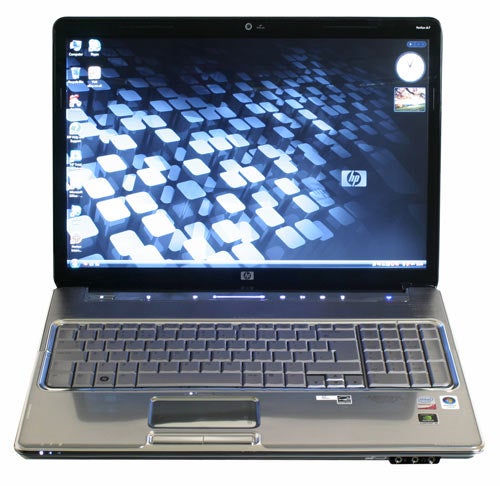
Verdict
Key Specifications
- Review Price: £781.77
It’s not difficult to see how HP has become the world’s biggest notebook and PC name, since it generally manufactures high quality, good-looking products that perform well. Today we’re looking at what might well turn out to be another, the Pavilion dv7-1000ea.
Equipped with a Blu-ray drive and an eminently affordable price, it certainly is starting well and regular readers might feel a twinge of recognition here, either at the name or, more likely, at the picture. No, it’s not Déjà vu, but the dv7-1000ea’s smaller sibling that Andy reviewed a while back, which goes under the no less intimidating name of the HP Pavilion dv5-1011ea. 
While its naming scheme is the one area where HP could work on, the main difference between the two models is hinted at by the number five in the one, and seven in the other. Whereas the dv5 was a 15.4in notebook, the dv7 is, as you might have guessed, its 17in twin. And when I say twin I mean it; apart from the increase in size and a higher-capacity eight-cell battery compared to the dv5’s six-cell model, not much has changed in terms of either looks or specifications.
Going for its looks and chassis first (we’re shallow that way), like with the dv5 it’s a very attractive beasty. It can basically be divided up into two parts, with the entire lid being black, while the bottom half is silver.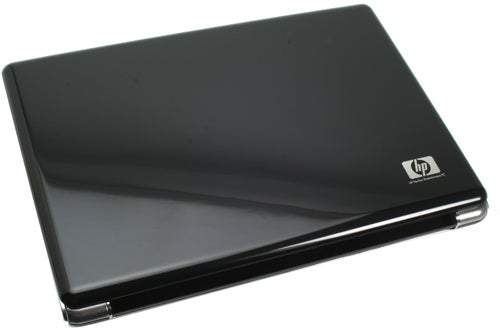
The piano black lid might be a fingerprint magnet, but is easy on the eye despite the barely visible conservative grey grid pattern. Fortunately, a cleaning cloth is provided to keep the notebook in pristine condition. There is a relatively small HP logo in one corner, which becomes backlit in white when the notebook is turned on and it looks very nice.
Indeed, the lighting all over in this notebook is both subtle and useful. White LEDs, as seen on recent Toshiba notebooks (including the Toshiba Qosmio G50-115) are the flavour of the day, turning to orange in their ‘negative’ state. Apart from the logo, tiny hard drive, power and battery indicators are visible with the lid closed. There’s another indicator for num-lock and one above the touchpad, which turns orange when you switch the pad off. 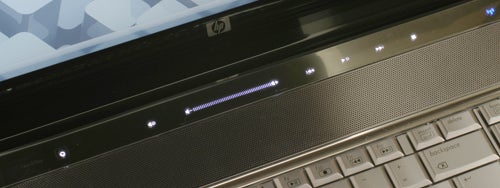
Just below the screen is a silver strip containing the multimedia controls and power button, all backlit in white with the exception of the wireless radio indicator, which is blue. Excluding the power button they’re also touch sensitive and each is well-separated and quite responsive, the only potential bugbear being the volume slider where adjustments can be slightly inaccurate.
Getting onto the rest of the notebook’s lower half, below the multimedia controls there is an expanse of perforated metal covering the speakers and part of the lower chassis. The rest of it is silver plastic, carrying on the squared pattern from the lid. The patterned finish of the wrist-rests means fingerprints only show up from certain angles, unlike the lid where they are easily visible. Around it all runs classy chrome coloured trim and this is continued around the keyboard and the touchpad buttons, too.
This attractive design is matched by truly excellent build quality. Indeed, it was difficult to find any sign that cost-cutting had been employed anywhere in this machine’s construction, which given the far from extortionate price is very encouraging.
Further evidence of this quality can be found in the keyboard. As HP has proved with the 2133 Mini Note, it produces some of the best notebook keyboards and it has done nothing to sully that reputation here. Thanks to their smooth silver finish, keys do feel a little slippery, but they’re shaped so well that it’s not really an issue. Layout is exemplary, with a very large Enter, right Shift and Backspace keys. And, unlike a few manufacturers, it has found room for a full numeric keypad, something that ought to be a staple of desktop replacements like this.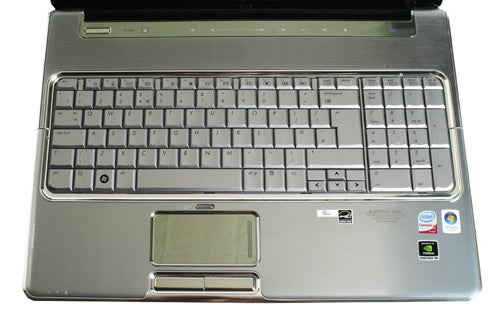
While the experience of key feedback can be somewhat personal, I found it to be pretty ideal, if somewhat on the light side. Springy response with plenty of travel makes for a pleasant typing experience, and an assured click never leaves you in any doubt if you’ve hit a key. If one were being particularly picky, it would be good to see HP taking some inspiration from recent Samsung notebooks like the Q310, which offer a secondary Fn key on the right and have brightness and volume controls conveniently located on the cursor keys, but this is a small matter and the dedicated media controls more than make up for this.
Getting onto the touchpad itself, HP is making a clever play for the female market by giving its pad dual functionality as a mirror since it’s incredibly reflective. Consequently, not only can you use it to adjust your makeup, but your fingers will glide across it effortlessly provided you don’t put too much weight or pressure on it. It’s also well proportioned, though it shares the rest of the machine’s propensity for fingerprints.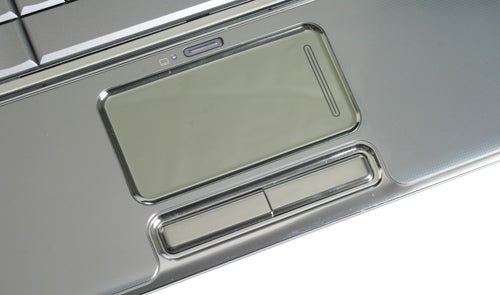
Underneath it the buttons are well built and nicely integrated. Another nice touch is a button above the touchpad that deactivates the touchpad, which is handy if you’re using an external mouse and don’t want accidentally to hit the touchpad when typing.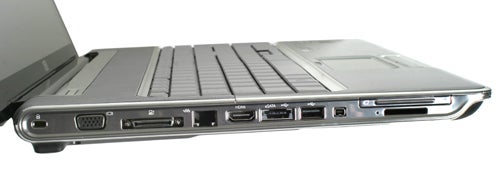
Another area where the company has gone to town is when it comes to ports: the Pavilion dv7-1000ea has pretty much every base covered. On the left, you’ll find a lock slot, VGA out, an HP docking port, Gigabit Ethernet, HDMI 1.2 for connecting larger screens, FireWire and two USB 2.0 ports, one of which doubles as e-SATA for the fastest external hard drive access you can get. Furthermore there’s a memory card reader handling the usual formats (SD/SDHC, Memory Stick(Pro), MMC and xD card) residing below the 54mm ExpressCard slot. 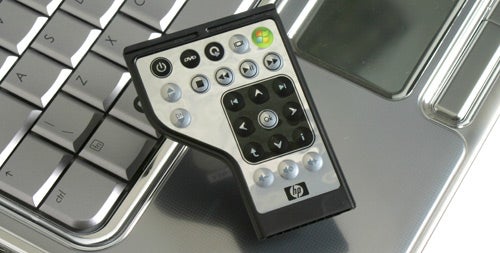
The ExpressCard slot also houses the included remote. No longer the rarity they once were, remotes are nevertheless not a given inclusion even on entertainment notebooks and its a useful addition even if it’s not the most ergonomic remote control you’ll ever use.
On the right are a further two USB ports, modem and power jacks, and a Blu-ray drive. As is typical this only reads Blu-ray media, but can burn any writeable DVD format.
HP has kept the front of its notebook fairly clean, housing only the infrared sensor and audio connections. One of those little touches you might expect from a market leader is that there are twin headphone ports as standard, ideal for watching a film with your better half without disturbing anyone. They also double as S/PDIF (digital audio out), combining with the HDMI output and the Blu-ray drive to make this the possible centre of your home entertainment system.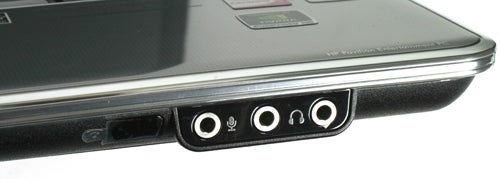
Internally there’s an Intel Core 2 Duo P7350 is running at what might seem a lowly 2.0GHz, but this being a Centrino 2 model, it utilizes a 1,066MHz front side bus and fits in an efficient 25W thermal envelope compared to the usual 35W. This is backed by a generous 320GB 5,400RPM hard drive and a very capable 4GB of 800MHz DDR2 RAM. This amount of memory will be somewhat underused by the 32-bit version of Windows Vista Premium, but better too much than too little and you won’t have to upgrade if you ever switch to a 64-bit OS. 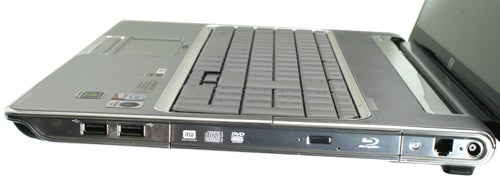
Wi-Fi is well taken care of by an Intel Draft-N Wi-Fi module, but the Pavilion’s cable-free credentials do take a bit of dent due to the baffling absence of Bluetooth. This might be acceptable on low-end budget notebooks, but it’s something you’d expect to find in a notebook of this price.
Meanwhile a GeForce 9600M GT discrete graphics chip with 512MB of memory makes for a very capable entertainment machine, while not being too much of a gaming slouch either. At high detail, with 2x anti-aliasing and 4x filtering, TrackMania Nations Forever returned a score of 30.2FPS. While this is slightly lower than HP’s Pavilion dv5-1011ea despite featuring exactly the same components, the test was run at a higher resolution because dv7’s 17in panel is 1,440 x 900 compared the former’s 1,280 x 800. This might have an effect on the settings you can run in some games, but nonetheless the dv7 is capable of playing games at reasonable settings.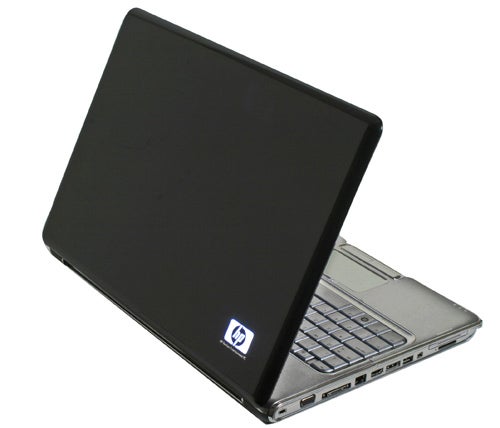
Unfortunately, the resolution might have changed but nothing else has, meaning the screen is still the weakest factor of HP’s Pavilion range. This is due to HP’s new glossy plastic screen cover that stretches across the front of the screen, creating a seamlessly flat bezel. Though this does create a striking visual effect, it also reduces the brightness of the screen compared to other notebooks and given the choice a brighter and more legible display would be preferable. We could also complain about HP not taking the opportunity to upgrade the resolution to a Full HD compatible 1,920 x 1,200, but the advantages are icons that are easier to see and better performance in games – something that many people may appreciate – as well as the cheaper price.
Another issue regarding the display are some rather mediocre viewing angles and more severe reflectivity than you would expect on even a glossy screen. Actually, with any kind of ambient lighting, we’re pretty much talking about another mirror here. These factors combine to jump the display down from average to below par. For example, while text is sharp and it’s reasonable at distinguishing between grey shades, finding a viewing angle at which this is visible is challenging at best. All of which is not to say that the dv7 can’t provide a reasonable film experience, but you’ll have to sit directly in front of the screen in a darkened room to get the most out of it, making it difficult for more than one person to view the screen at once.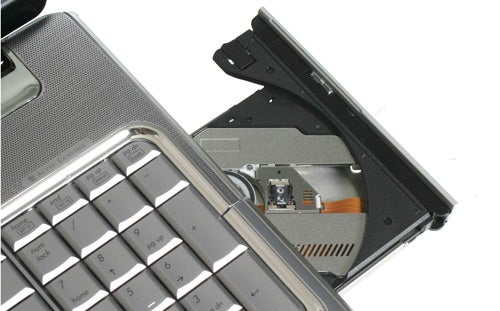
Moving onto the aural part of the experience, things look up considerably thanks to the Altec Lansing integrated speakers and subwoofer. This set manages plenty of punch, with convincing bass at very audible volume levels and little audible distortion at high volumes. While they are simply no match for the excellent harman/kardons on Toshiba’s Qosmio G50-115, they’re certainly more than adequate for notebook speakers. 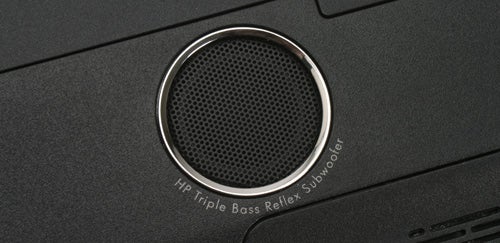
When it comes to battery life, the dv7-1000ea also impresses despite being a ‘desktop replacement’. Its 8-cell, 73Whr battery was good for about two and a half hours of DVD playback at full brightness. In our multi-tasking productivity tests it lasted in impressive three hours and 36 minutes, besting both its 15.4in cousin and the Dell Studio 15. This excellence was matched in the lower intensity reading test, where the dv7 lasted for just over four hours. Consequently, this machine could take on light mobile duties, even if its weight, at 3.5 kilos, makes it anything but portable.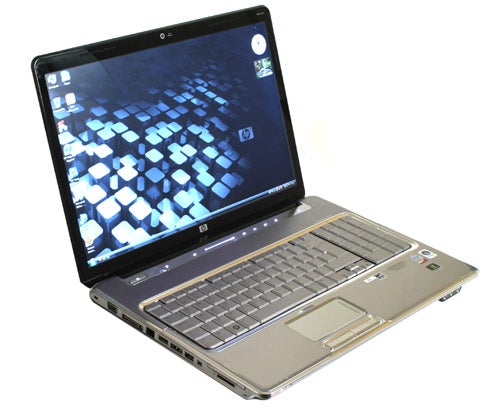
”’Verdict”’
Overall, the Pavilion dv7-1000ea offers good looks, brilliant ergonomics, loads of connectivity, decent specifications and speakers and even above average battery life for a relatively small outlay. This alone would normally garner it a recommendation, unfortunately HP hasn’t conquered the main weakness of its Pavilion range since like its 15.4in bedfellow its display lacks brightness and suffers from prohibitively poor viewing angles. If you can live with this flaw it’s still an excellent piece of kit, but it’s worth seeking out a demo unit before taking the plunge.
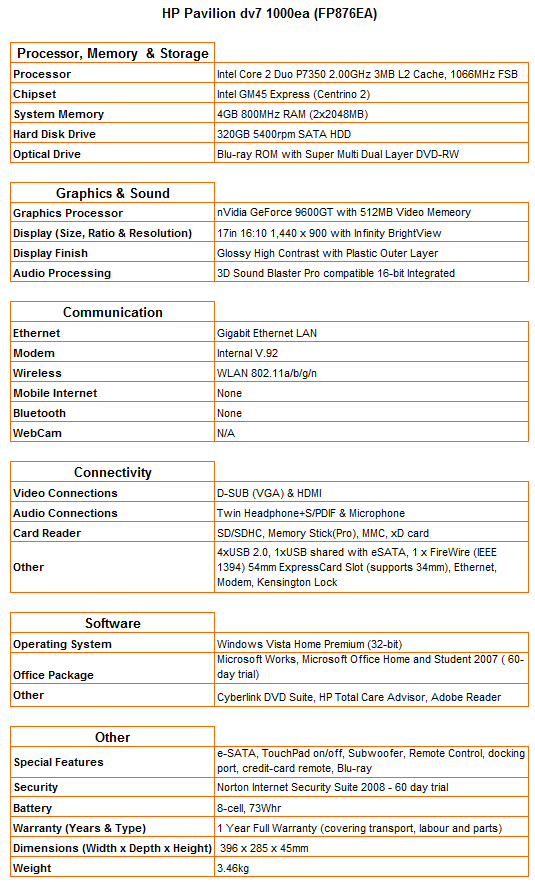
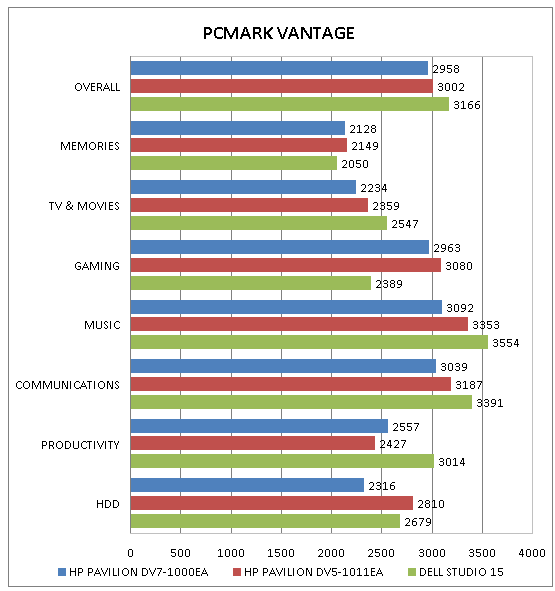
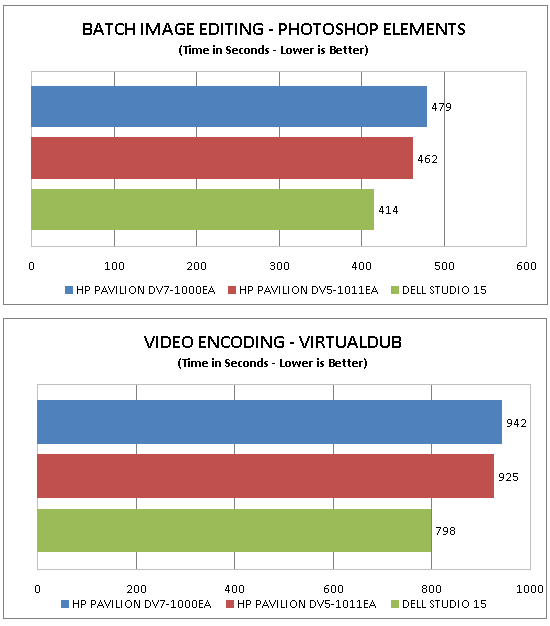
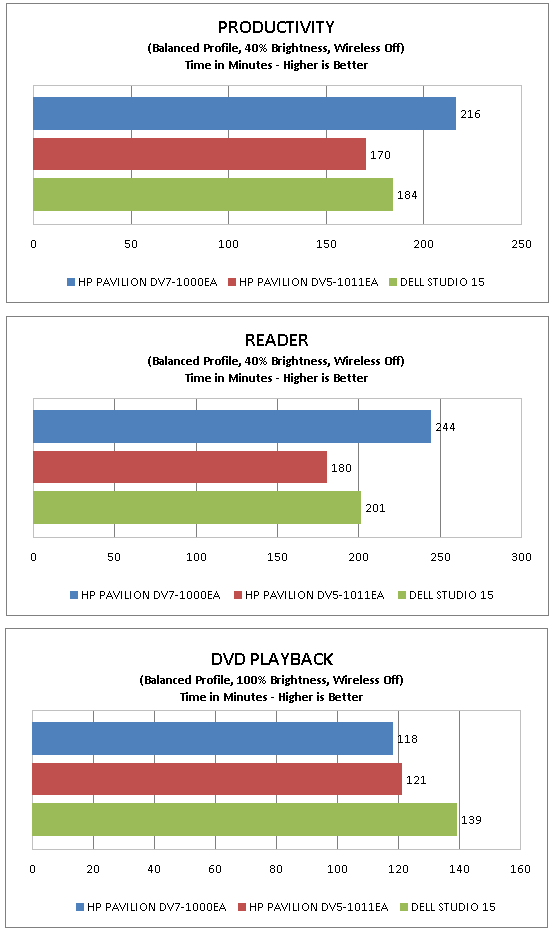
How we test laptops
Unlike other sites, we test every laptop we review thoroughly over an extended period of time. We use industry standard tests to compare features properly. We’ll always tell you what we find. We never, ever, accept money to review a product.
Trusted Score
Score in detail
-
Performance 8
-
Design 9
-
Value 8
-
Features 8

